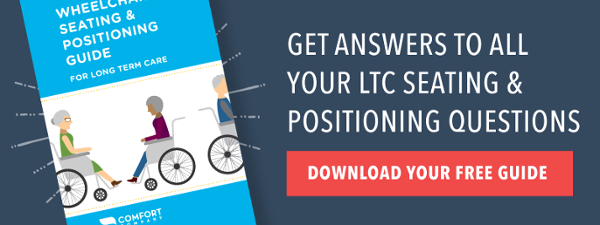When we do a chart review on a resident before going in for an evaluation, we often see LTC residents with a dementia diagnosis. Our brains immediately assume memory loss.
Let’s take our understanding of dementia to the next level! We need to have a better understanding of all the signs and symptoms of dementia and how a resident’s function and quality of life are impacted.
CLASSIC SIGNS OF DEMENTIA ARE:
-
Memory loss
-
Communication issues
-
Swallowing issues
-
Difficulty with reasoning and problem solving
-
Difficulty completing complex tasks
-
Planning and organizing difficulties
-
Coordination impairments
-
Loss of motor function
-
Impairment in response to sensory stimuli
-
Confusion and disorientation
-
Personality changes
-
Depression
-
Anxiety
-
Paranoia
-
Hallucinations
-
Agitation
This is an extensive list that can lead to medical complications.
WE KNOW OUR RESIDENTS ARE NOW AT RISK FOR:
-
Malnutrition and dehydration
-
Inability to communicate pain, needs, and desires
-
Inability to perform self-care tasks
-
Injury due to inability to recognize and react to unsafe situations
-
Infections, especially pneumonia and wounds
-
Falls during ambulation
-
Falls from the bed and wheelchair level
This can be overwhelming to a therapist, and it is normal to think, “What can I do to help a person in this state?” It is easy to focus on the resident’s limitations, the lack of ability to care for himself, and the inability to learn new skills. In these cases, it is tempting to refuse to pick up a resident due to his or her “poor rehab potential.”
As therapists we understand we cannot reverse or stop the disease process from progressing. What we CAN do is change the environment to help them complete their ADLS for as long as possible or help decrease the burden of resident safety.
Let’s change our focus to what we CAN do.
PLACE THE RESIDENT IN A SEATING SYSTEM THAT WILL:
- Promote any remaining ABILITY to swallow, communicate, and participate in activities of daily living, etc.
- Promote safe transfers
- Prevent falls from the wheelchair level
Next time you see dementia or a disorder linked to dementia on the diagnosis list during the chart review, you won’t think, “I am not going to pick up this resident because he/she has lost his/her ability to learn new skills.” INSTEAD you will think, “YES! I can help this person maintain the abilities they still have and prevent them from harm by placing them in an appropriate seating system that promotes function!”
Stayed tuned because in the following weeks I talk about the types of dementia, take an in depth look at the parts of the brain impacted by dementia, and the corresponding loss of functionality associated with those parts.

Ana Endsjo, MOTR/L, CLT
Clinical Education Manager LTC Division
Ana Endsjo has worked as an occupational therapist since 2001 in a variety of treatment settings. She has mainly worked with the geriatric population, dedicated to the betterment of the treatment of the elderly in LTC centers. Her focus has been on seating and positioning and contracture management of the nursing home resident. With this experience, her hope is to guide other therapists, rehab directors, nurses, and administrators through educational guides, blogs, webinars, and live courses in her role as Clinical Education Manager for the long term care division.

